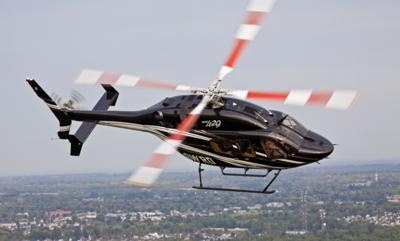AD 2020-20-06 Requires Repetitive Inspections Of Certain Cyclic And Collective Assembly Bearings
The FAA is adopting a new airworthiness directive (AD) for Bell Helicopter Textron Canada Limited (BHTC) Model 429 helicopters.

This AD requires repetitive inspections of certain cyclic and collective assembly bearings. This AD was prompted by reports that precipitation can lead to reduced effectiveness of the grease in the bearings. The actions of this AD are intended to address an unsafe condition on these products. This AD is effective October 30, 2020.
Supplementary Information: The FAA issued a notice of proposed rulemaking (NPRM) to amend 14 CFR part 39 by adding an AD that would apply to BHTC Model 429 helicopters with a bellcrank assembly part number (P/N) 429-001-523-101, 429-001-523-103, 429-001-532-101 or 429-001-532-103 installed. The NPRM published in the Federal Register on March 20, 2020 (85 FR 16019). The NPRM proposed to require, at specified intervals, disconnecting the forward ends of the collective control tube, longitudinal stability and control augmentation system (SCAS) actuator, and lateral SCAS actuator, and stowing the collective control tube and each SCAS actuator to prevent binding; and then inspecting for any roughness in the flight control system and any binding in any arm end bearing and on the longitudinal bellcrank assembly. If there is any roughness in the flight control system, the NPRM proposed to require replacing the six pivot bearings in the collective/lateral bellcrank assembly and the longitudinal bellcrank
assembly. If there is any binding in any arm end bearing or on the longitudinal bellcrank assembly, the NPRM proposed to require replacing each arm end bearing before further flight.
Transport Canada, which is the aviation authority for Canada, has issued Canadian AD CF-2016-11R2, dated October 18, 2017, to correct an unsafe condition for BHTC Model 429 helicopters equipped with a bellcrank assembly P/N 429-001-523-101, 429-001-523-103, 429-001-532-101 or 429-001-532-103. Transport Canada advises that in-service reports show that bearings in the roofmounted flight control bellcranks are adversely affected by precipitation. Pooling can occur at the forward portion of the roof, providing a source of contamination for bearings in the roof-mounted flight controls. Precipitation may reduce the effectiveness of the grease in the bearings, allowing corrosion to occur. This can result in intermittent restrictions, such as binding and roughness in the flight controls. Transport Canada also advises that an undetected corroded bearing could lead to restrictions in the collective, directional, or pitch control systems, resulting in difficulty controlling the helicopter.
Transport Canada consequently requires within 12 months after the helicopter was manufactured and thereafter at intervals not to exceed 6 months, inspecting the flight controls and replacing any discrepant bearings. If the helicopter's age exceeds 12 months, Transport Canada requires the 12-month inspection within 30 days. Transport Canada also requires, within 30 days, performing a functional check and replacement, if applicable, of the bearings if the most recent functional check of the helicopter was performed with the alternate procedure of using a hydraulic test stand or if the inspection method is unknown.
 Unfortunate... ANN/SportPlane Resource Guide Adds To Cautionary Advisories
Unfortunate... ANN/SportPlane Resource Guide Adds To Cautionary Advisories ANN FAQ: Turn On Post Notifications
ANN FAQ: Turn On Post Notifications ANN's Daily Aero-Term (04.29.24): Visual Approach Slope Indicator (VASI)
ANN's Daily Aero-Term (04.29.24): Visual Approach Slope Indicator (VASI) ANN's Daily Aero-Term (04.28.24): Airport Marking Aids
ANN's Daily Aero-Term (04.28.24): Airport Marking Aids ANN's Daily Aero-Linx (04.28.24)
ANN's Daily Aero-Linx (04.28.24)



